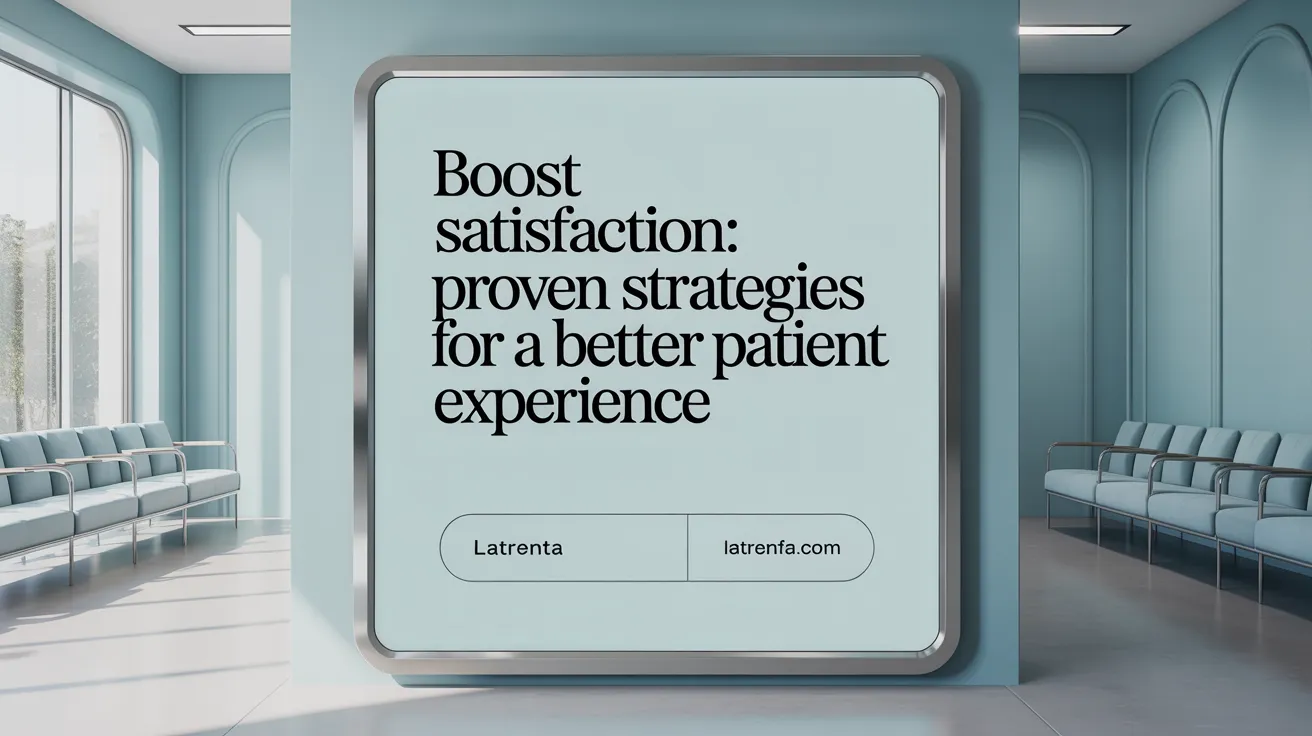Why Personalization Matters in Plastic Surgery
In the evolving field of plastic surgery, customization has become the gold standard for achieving optimal patient satisfaction and safety. Personalized treatment plans, tailored consultations, and realistic expectation management are reshaping how patients experience surgical and non-surgical aesthetic procedures. This article explores the strategies, benefits, and processes involved in creating a customized plastic surgery experience designed to meet individual needs and deliver natural, harmonious results.
Understanding the Importance of Customized Plastic Surgery Treatments

Why is customizing plastic surgery treatments important?
Personalized treatment plans are crucial in plastic surgery because they ensure that each procedure is tailored to an individual's unique facial or body features, aesthetic preferences, and health considerations. Consulting with a skilled, board-certified surgeon allows for detailed evaluations, including imaging or testing when necessary, to design the most effective plan.
Custom approaches help achieve results that look natural and meet patient expectations. For example, procedures like face and neck lifts, breast surgeries, or non-surgical treatments such as Botox and fillers are adapted to each person’s anatomy, skin elasticity, and specific concerns.
Safety and risk reduction are also improved with tailored plans. Recognizing medical issues, physical limitations, and lifestyle factors enables surgeons to select the safest techniques, minimize complications, and enhance comfort.
In addition, combining multiple procedures, such as a Mommy Makeover, offers comprehensive transformation while reducing overall recovery time and costs. Personalization allows for precise surgical techniques, better scar management, and aesthetic harmony.
By focusing on individual needs and goals, this patient-centered approach maximizes satisfaction, safety, and the naturalness of the outcome. Ultimately, customized treatments align surgical results with what each person desires, making the process more effective and fulfilling.
Strategies to Enhance Patient Satisfaction in Plastic Surgery Practices

What strategies can improve patient satisfaction in plastic surgery practices?
Enhancing patient satisfaction begins with a personalized approach that addresses each individual's unique needs and aesthetic goals. Plastic surgery providers can improve experiences by offering detailed patient education and transparent communication from the initial consultation through postoperative care. This includes discussing realistic expectations, potential outcomes, and recovery processes, helping patients understand what is achievable and fostering trust.
Utilizing validated measurement tools like the BREAST-Q or custom questionnaires during follow-up appointments allows practices to gather meaningful feedback on patient satisfaction. These tools help monitor outcomes, identify areas for improvement, and confirm that patient expectations align with achievable results.
Safety also plays a crucial role. Strict safety protocols, including comprehensive preoperative testing, stringent sterilization standards, and adherence to accreditation standards such as those from the AAAASF, increase patient confidence. Clearly communicating these safety measures reassures patients and reduces anxiety.
Creating a welcoming, supportive environment throughout the patient journey is vital. This involves friendly staff, manageable wait times, and a comfortable setting. Personalized care plans, where treatments—whether surgical or non-surgical—are tailored to individual anatomy and desires, significantly improve satisfaction.
Furthermore, actively seeking patient feedback and making adjustments based on their responses encourages continuous improvement. By regularly evaluating their services and facilities, practices build trust, foster loyalty, and ensure that patients feel valued and cared for.
In summary, strategies like comprehensive patient education, realistic expectation setting, the use of feedback tools, rigorous safety protocols, and a supportive environment contribute significantly to better patient satisfaction, positive outcomes, and a stronger reputation for plastic surgery practices.
The Customization Process: From Consultation to Personalized Treatment Plans

What does the customization process in plastic surgery typically involve?
The journey to personalized plastic surgery begins with an in-depth consultation. During this session, the surgeon evaluates the patient’s aesthetic goals, medical history, and physical features to craft a treatment approach that aligns with individual needs.
Modern techniques, such as 3D imaging and virtual simulations, are commonly used to provide patients with a preview of potential outcomes. These tools help clarify expectations and allow patients to visualize their post-surgery appearance, fostering transparency and confidence.
Developing a personalized surgical plan involves selecting procedures best suited to the patient's unique anatomy, skin condition, and desired results. For example, facial procedures like facelifts or rhinoplasty are tailored to facial shape, skin elasticity, and facial balance. Similarly, body contouring options such as liposuction or Mommy Makeovers are customized based on body shape and physical limitations.
Surgeons consider various factors, including age, elasticity, scarring potential, and overall health, to determine the most appropriate surgical techniques. Advanced technology, like 3D printing and robotic-assisted surgery, further enhance surgical precision and safety.
Throughout this process, open communication is emphasized. Clear discussions about realistic outcomes, safety protocols, and recovery expectations help establish mutual trust and ensure satisfaction. This collaborative approach empowers patients to make informed decisions, feeling confident that their treatment plan directly reflects their personal goals and concerns.
By integrating technological innovations and patient-centered care, the customization process ensures each surgical plan is unique and optimized, leading to natural-looking results that truly match the individual's vision.
Tailoring Facial and Body Procedures to Individual Needs

How can plastic surgery procedures for the face and body be tailored to individual patient needs?
Personalized planning is essential in modern facial and body plastic surgery. Before any procedure, surgeons conduct detailed preoperative assessments, examining the patient's unique anatomy, skin conditions, and specific aesthetic goals. This initial step helps identify the most suitable approach and sets realistic expectations.
Technological advancements, such as 3D imaging, play a significant role. They allow surgeons to simulate potential outcomes and customize surgical plans more precisely. For example, in rhinoplasty, virtual previews help patients visualize the changes, ensuring alignment with their desires.
Common procedures like facelifts, mommy makeovers, and rhinoplasty can be extensively customized. Surgeons select appropriate techniques—such as endoscopic methods for less invasive lifts or tissue expansion for reconstruction—based on individual needs. These choices are influenced by factors like age, skin elasticity, facial structure, and overall health.
Postoperative care is equally tailored. Recovery plans are designed to suit the patient's lifestyle, addressing pain management, swelling, and activity restrictions. This personalized approach helps ensure safe healing and boosts satisfaction.
A holistic view considers physical, psychological, and functional aspects. Recognizing a patient's emotional readiness and ensuring that functional concerns—like breathing or mobility—are addressed leads to outcomes that are not only aesthetically pleasing but also improve quality of life.
In summary, customizing facial and body procedures involves careful assessment, technology-supported planning, and individualized postoperative care. This approach delivers safer, more natural results aligned perfectly with each person’s unique features and goals.
Setting Realistic and Personalized Expectations for Optimal Results

How can surgeons set realistic and personalized expectations for surgical outcomes?
A fundamental step in achieving successful facial plastic surgery results is honest, open communication between surgeons and patients. Surgeons take time to discuss what is realistically achievable based on individual facial features, skin elasticity, and overall health. These conversations help set practical expectations, preventing disappointment and fostering trust.
Using advanced imaging tools such as digital or virtual simulations plays a crucial role in visualizing results before surgery. These technologies allow patients to see a projected outcome, ensuring their goals are aligned with natural contours and proportions of their face or body. This visual preview provides a clearer understanding of potential changes and helps in making informed decisions.
Understanding patient motivations is equally important. Surgeons assess whether patients’ reasons for surgery are realistic and if their goals are compatible with their anatomy. This process ensures that the desired aesthetic improvements are harmonious and achievable without compromising natural beauty.
Education is another vital component. Providing detailed information about the procedure, recovery process, and possible limitations helps patients form accurate expectations. Shared decision-making involves patients actively in planning, which increases their confidence and satisfaction.
Modern safety protocols and technological innovations, such as detailed checklists and minimally invasive procedures, further support positive outcomes. They help minimize risks and improve overall safety, which contributes to peace of mind.
In summary, effective expectation management combines honest communication, realistic visualization, understanding individual motivations, and thorough patient education. These strategies help patients be well-informed and confident that their goals are attainable, ultimately leading to more satisfying results.
The Role of Patient Education, Communication, and Feedback in Enhancing Satisfaction
Patient education, effective communication, and feedback are fundamental in ensuring positive experiences and satisfaction after facial plastic surgery and other cosmetic procedures.
Educating patients thoroughly about their procedures helps them understand what to expect, including potential outcomes, recovery processes, and possible risks. This informed approach supports shared decision-making, making patients more confident and empowered about their choices.
Surgeons often use clear, empathetic dialogue tailored to individual preferences and concerns. Techniques like active listening and positive framing help reduce patient anxiety, improve cooperation, and foster trust in the surgeon. For example, visual tools such as 3D imaging allow patients to preview expected results, aligning their expectations with realistic outcomes.
Incorporating patient feedback is crucial for continuous quality improvement. Feedback can identify aspects of care that may need enhancement, making services more personalized and responsive. Facilities can implement surveys and follow-up consultations to monitor satisfaction, making adjustments to optimize future patient care.
Examples of personalized interactions, such as Dr. Schaffer’s detailed consultations or Dr. Ghavami’s custom rhinoplasty options, demonstrate how understanding individual goals builds confidence. Providing comprehensive pre- and post-procedure guidance reduces uncertainty and supports smoother recovery.
Using supportive techniques, including relaxation scripts and reassurance, can further decrease pain and stress during treatment. This holistic approach to communication and education ultimately results in higher satisfaction, better compliance with aftercare, and improved overall outcomes.
Embracing Personalization for Superior Plastic Surgery Experiences
Customizing the plastic surgery journey—from initial consultation to post-operative care—is key to achieving optimal patient satisfaction and safety. By incorporating personalized treatment plans, leveraging advanced technologies, and fostering transparent communication, surgeons can better meet individual aesthetic goals and improve outcomes. Patient education and ongoing feedback play essential roles in enhancing trust and confidence throughout the process. As modern plastic surgery continues to prioritize patient-centered care, embracing customization not only leads to more natural and harmonious results but also empowers patients to feel confident and valued at every step of their transformative experience.
References
- The Importance of Customized Treatment Plans in Facial ...
- Tailored Personalization in Plastic Surgery
- Setting Your Facial Plastic Surgery Expectations | Austin, TX
- A Systematic Review of Questionnaires Assessing Patient ...
- How Our Doctors Can Customize Your Aesthetic Results
- Customizing Your Mommy Makeover
- Transform Your Look: Discover the Best Boston Plastic ...
- Customize Your Rhinoplasty with These Pre
